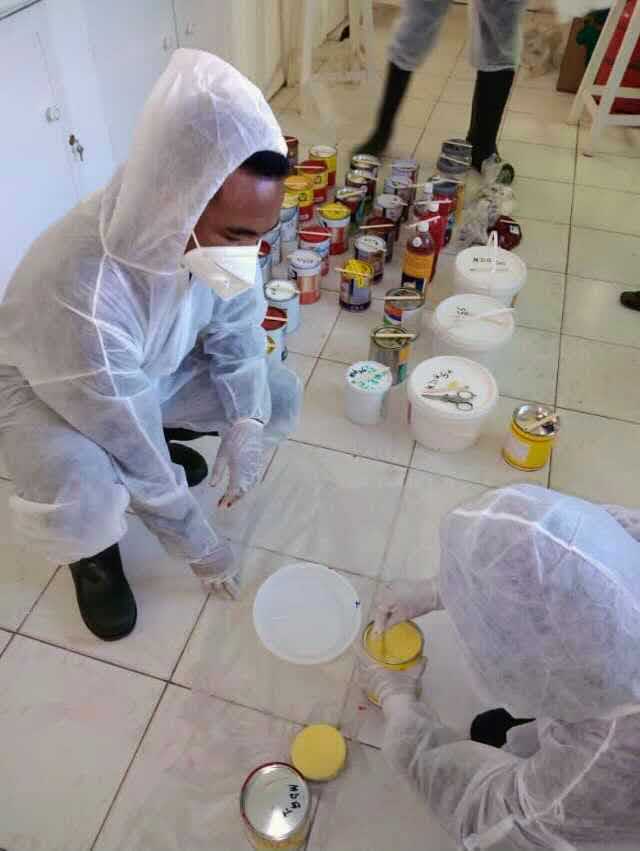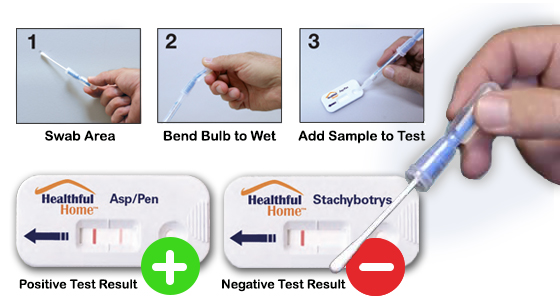The Function of Mycotoxin testing Services in Food and Feed Safety And Security
The Function of Mycotoxin testing Services in Food and Feed Safety And Security
Blog Article
Ensuring Compliance With Regulations: the Function of Mycotoxin Checking in Top Quality Control
Guaranteeing conformity with rigorous laws is paramount for preserving food security, and the role of mycotoxin testing in quality control can not be overemphasized. Mycotoxins, poisonous substances produced by particular molds, posture considerable health and wellness dangers, making their detection essential in food manufacturing. Adherence to regulatory requirements, such as those established by the FDA and EU, needs durable testing methods and technologies to recognize and measure these contaminants. By implementing comprehensive screening procedures, companies can prevent possible health and wellness crises, stay clear of pricey recalls, and preserve customer depend on. However, the complexities of these testing procedures increase important concerns about their performance and efficiency.
Recognizing Mycotoxins
Understanding mycotoxins is essential to making sure the top quality and safety of agricultural products. Mycotoxins are toxic second metabolites created by specific types of fungis, commonly found in foods items such as seasonings, grains, and nuts. These compounds can develop at numerous phases of the food manufacturing procedure, from pre-harvest to storage space, and pose significant health and wellness threats to both human beings and pets (Mycotoxin testing Services). One of the most infamous mycotoxins consist of aflatoxins, fumonisins, ochratoxins, and trichothecenes, each connected with details ecological problems and fungal types.
The presence of mycotoxins in food items can lead to chronic and severe health concerns, including liver damage, immune reductions, and carcinogenic impacts. By understanding the sources, types, and results of mycotoxins, stakeholders in the agricultural field can much better carry out preventative actions and minimize threats, ensuring much safer consumption for end-users.
Regulatory Requirements for Mycotoxins
Having actually established a fundamental understanding of mycotoxins and their effect on food safety and security, it is critical to review the regulatory criteria controling their visibility in farming products. Governing standards for mycotoxins are vital since they specify permitted restrictions, ensuring food safety and security and safeguarding public health and wellness. Different worldwide and nationwide firms have actually set these limits based on extensive threat evaluations.
The Codex Alimentarius Commission, an international body developed by the FAO and that, supplies guidelines and optimum allowed degrees for various mycotoxins in food and feed. The Codex has actually set limits for aflatoxins in peanuts, maize, and dried figs, amongst other commodities. These standards are commonly embraced or adapted by individual nations to fit their certain requirements.
In the European Union, Policy (EC) No 1881/2006 states optimum levels for several mycotoxins, such as aflatoxins, ochratoxin A, and deoxynivalenol, in numerous food items. The U.S. Food and Drug Management (FDA) has actually established action degrees for mycotoxins like aflatoxins in products such as nuts and grains.
Adherence to these regulatory criteria is crucial for maintaining market accessibility, consumer trust fund, and public wellness. Non-compliance can cause substantial financial losses and health and wellness risks, emphasizing the significance of strict mycotoxin testing procedures.
Checking Methods and Technologies

ELISA is extensively valued for its fast and cost-efficient testing capacities, making it ideal for high-throughput settings. It counts on antibodies to spot specific mycotoxins, supplying lead to a reasonably short time frame. However, its level of sensitivity may be restricted contrasted to a lot more advanced techniques.
HPLC, on the various other hand, succeeds in providing measurable analysis with high accuracy and accuracy. It divides complicated mixes into specific parts, making it highly effective for determining and quantifying several mycotoxins at the same time - Mycotoxin testing Services. This strategy, while more taxing and resource-intensive than ELISA, uses a greater degree of dependability

LC-MS represents the pinnacle index of analytical specificity and level of sensitivity. Incorporating the splitting up power of fluid chromatography with the discovery abilities of mass spectrometry, LC-MS can find also trace degrees of mycotoxins. This technique is vital for validating the presence of mycotoxins in regulative and forensic contexts, making sure conformity with strict safety criteria.
Implementing Testing Procedures

Integrating these sophisticated testing approaches right into a a knockout post comprehensive quality assurance framework requires a well-structured method to applying testing protocols. To achieve this, companies must initially carry out a thorough risk analysis to identify prospective mycotoxin contamination factors within the supply chain. This analysis informs the development of a tailored testing strategy that resolves particular vulnerabilities.
Next, establishing standard tasting treatments is crucial. Consistent sampling makes sure that test outcomes are trustworthy and representative of the whole batch (Mycotoxin testing Services). Sticking to guidelines from regulative bodies, such as the FDA or EFSA, helps maintain compliance and enhances the reliability of the testing procedure
Educating workers is an additional critical part. Staff has to be proficient in both example collection and the procedure of testing tools. Routine training sessions and accreditation programs can make certain that team members remain updated with the most up to date techniques and regulatory changes.
Benefits of Mycotoxin Examining
Mycotoxin testing supplies countless benefits that substantially boost the safety and security and top quality of food and feed products. Mainly, it works as an important control step to stop contaminated items from getting to the customer market, thus guarding public health. By identifying and measuring mycotoxins such as aflatoxins, ochratoxins, and fumonisins, manufacturers can ensure that their products meet stringent regulative criteria, hence preventing potential lawful effects and linked prices.
Furthermore, mycotoxin screening adds to the economic stability of food and feed industries by decreasing the risk of large item recalls. The capability to separate and detect contaminated sets early in the manufacturing procedure decreases waste and stops the financial losses connected with broken brand track record. It promotes customer count on and loyalty, as customers are increasingly aware of food safety and security issues and need greater top quality standards.
The implementation of normal mycotoxin screening likewise advertises finest methods within farming and manufacturing markets. By adhering to extensive testing protocols, companies can optimize their quality assurance procedures, boost functional performance, and make certain the regular manufacturing of risk-free, premium products. In final thought, the benefits of mycotoxin screening are multifaceted, adding to public wellness, financial security, and market integrity.
Conclusion
Mycotoxin testing is vital in ensuring compliance with governing standards, thus keeping food safety and security and quality control. Therefore, mycotoxin screening continues to be an essential element of modern-day food safety and security management systems.
Making sure conformity with stringent regulations is critical for keeping food safety, and the function of mycotoxin screening in top quality control can not be overstated.In the realm of mycotoxin screening, advanced technologies and techniques are essential in ensuring food safety and regulative conformity.Mycotoxin screening supplies numerous benefits that dramatically enhance the safety and quality of food and feed products.Mycotoxin testing is vital in making certain conformity with governing standards, thus preserving food security and high quality control. Thus, mycotoxin screening stays an Check This Out important component of modern-day food security administration systems.
Report this page